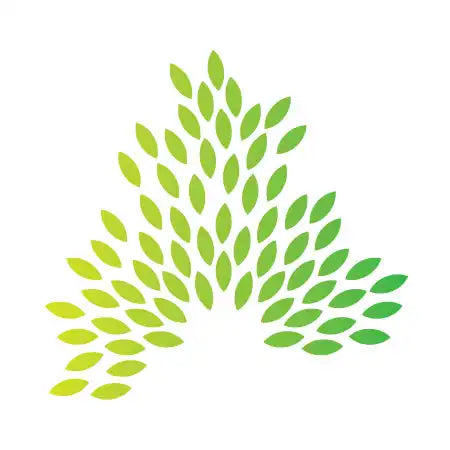Lice infestations can be a stressful experience, but the right anti-lice shampoo can make all the difference. This comprehensive guide will explore the best anti-lice shampoos, how to use them, and effective aftercare tips. Whether you're dealing with lice for the first time or looking to prevent future infestations, this guide has you covered.
Understanding the Enemy: Lice and Dandruff
Before diving into treatments, it's essential to distinguish between lice and dandruff. Both conditions affect the scalp but are entirely different issues requiring unique approaches.
Lice vs. Dandruff: What's the Difference?
Lice and dandruff might share some symptoms, but they have distinct characteristics. Recognizing these differences is crucial for selecting the correct treatment.
Lice: The Persistent Pests
Lice are small, wingless insects that live on the human scalp, feeding on blood. They spread through direct contact and can cause severe itching. Lice lay eggs, known as nits, which attach to hair shafts and are notoriously difficult to remove.
Dandruff: The Flaky Foe
Dandruff is a common scalp condition characterized by the shedding of dead skin cells. It often results from a dry scalp or seborrheic dermatitis. Unlike lice, dandruff is not contagious and typically causes milder itching.
Common Symptoms: Lice and Dandruff
Identifying whether you have lice or dandruff can be challenging. Here are the common symptoms to help you differentiate between the two:
Does Dandruff Itch?
Dandruff can cause itching, but it is generally less intense than the itching caused by lice. If you notice persistent itching accompanied by white flakes on your scalp and shoulders, it is likely dandruff.
Dry Scalp vs. Lice
A dry scalp can mimic some symptoms of lice, such as itching and flakiness. However, a dry scalp usually results from environmental factors like cold weather or harsh hair products, while lice infestations involve live insects and nits.
The Misconceptions about Lice and Dandruff
There are many myths about lice and dandruff. For instance, some people believe that dandruff nits are lice eggs. Understanding these misconceptions can help you take the right steps toward treatment and prevention.
Choosing the Right Anti-Lice Shampoo
Selecting the right anti-lice shampoo is vital for effective treatment. With numerous products available, it’s essential to know what to look for.
Key Ingredients to Look For
Effective anti-lice shampoos often contain ingredients like permethrin, pyrethrin, or dimethicone. These substances are proven to kill lice and their eggs. Checking the active ingredients will help you choose a product that works.
How to Use Anti-Lice Shampoo Effectively
Using anti-lice shampoo correctly is crucial. Here’s a step-by-step guide:
Read the Instructions: Follow the manufacturer’s directions carefully.
Apply to Dry Hair: Most shampoos work best on dry hair.
Massage Thoroughly: Ensure the shampoo covers all hair and scalp areas.
Leave On: Let the shampoo sit for the recommended time.
Rinse and Comb: Rinse thoroughly and use a fine-toothed comb to remove nits.
After Treatment Care
Treating lice doesn’t end with shampooing. Proper aftercare ensures the lice are completely gone and prevents re-infestation.
What to Do If You Still Feel Crawling After Treatment
Feeling a crawling sensation after treatment might indicate incomplete treatment or residual itchiness. If this sensation persists, consider retreating or consulting a healthcare professional.
Preventing Reinfestation
To keep lice at bay, follow these tips:
- Wash Bedding and Clothing: Use hot water to wash all bedding and clothing.
- Avoid Sharing Personal Items: Don’t share hats, brushes, or combs.
- Regular Checks: Regularly inspect for lice and nits, especially if there's an outbreak in your community or school.
Conclusion
Dealing with lice can be daunting, but you can eliminate them effectively with the right anti-lice shampoo and proper care. Remember to follow the treatment instructions carefully and take preventive measures to avoid reinfestation.
Frequently Asked Questions
Q1: Can Dandruff Nits Be Mistaken for Lice Eggs?
Ans: No, dandruff nits and lice eggs are different. Lice eggs, or nits, are firmly attached to hair shafts and are oval-shaped, whereas dandruff flakes are loose and irregular.
Q2: How Often Should I Use Anti-Lice Shampoo?
Ans: Use anti-lice shampoo as directed on the packaging, typically requiring a second application 7-10 days after the first to ensure all lice and nits are killed.
Q3: Is It Safe to Use Anti-Lice Shampoo on Children?
Ans: Most anti-lice shampoos are safe for children, but always check age recommendations and consult with a pediatrician if you have concerns.
Q4: Can Dry Scalp Be a Sign of Lice Infestation?
Ans: A dry scalp alone is not typically a sign of lice infestation. Look for additional signs like nits or live insects to determine if lice are present.
Q5: What Should I Do If My Scalp Is Irritated After Using Anti-Lice Shampoo?
Ans: If your scalp is irritated, rinse thoroughly and avoid using the product again until consulting a healthcare provider. Consider using a mild conditioner to soothe the scalp.
Q6: How Can I Prevent Lice in the Future?
Ans: To prevent lice, avoid sharing personal items like hats, brushes, and pillows. Regularly check for signs of lice, especially during outbreaks.
Q7: Can Lice Spread Through Sharing Hats or Brushes?
Ans: Yes, lice can spread through sharing personal items like hats, brushes, and combs. Avoid sharing these items to reduce the risk of spreading lice.



